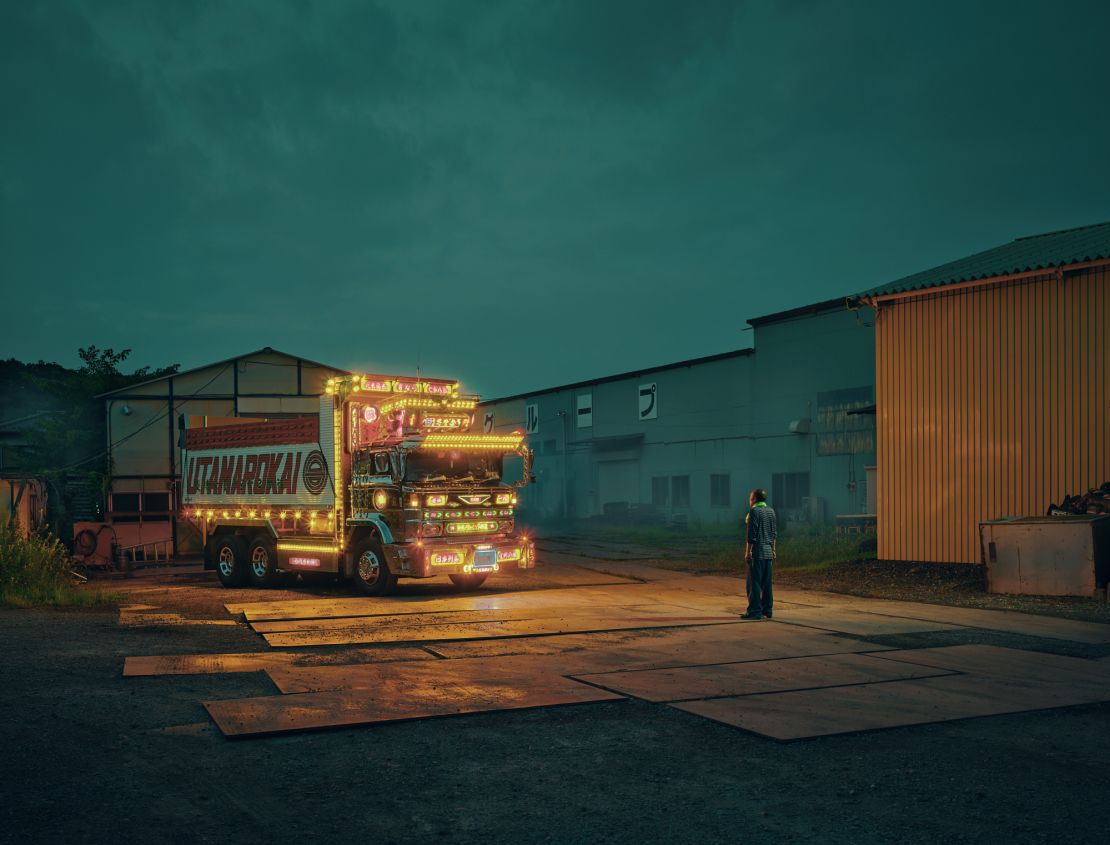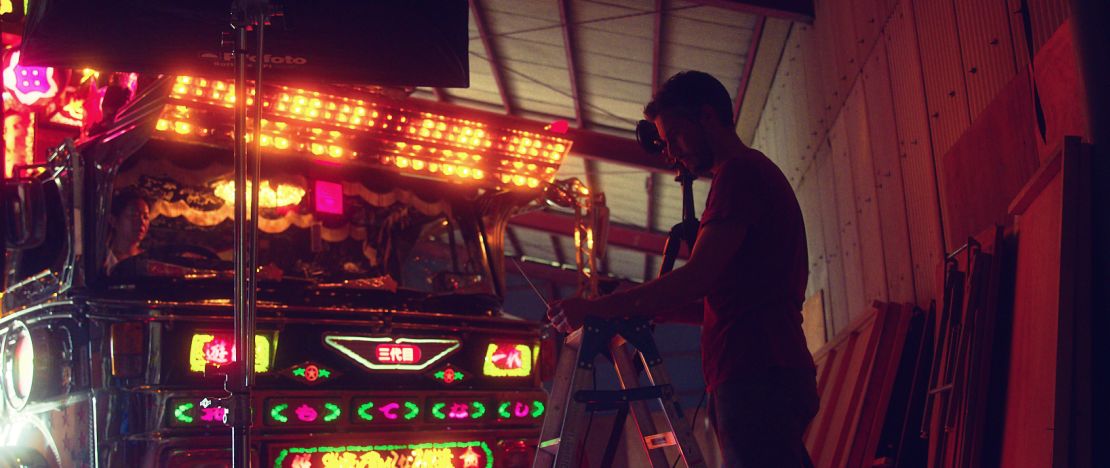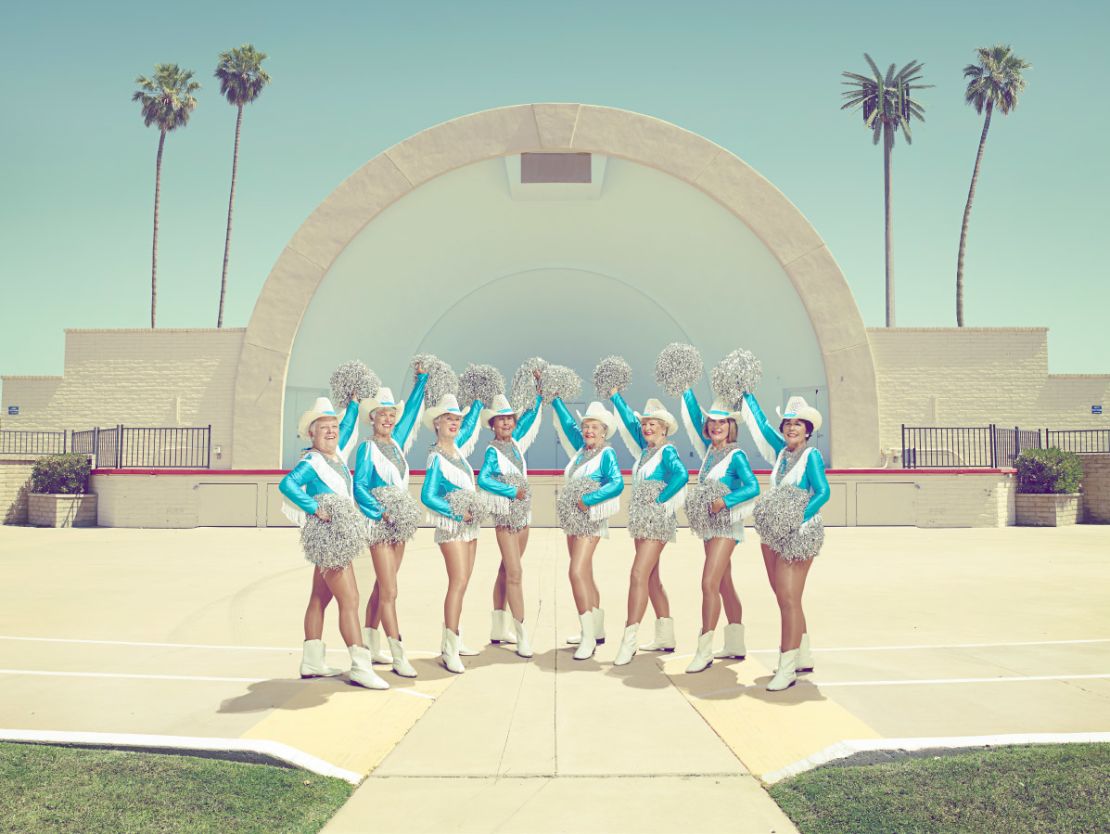Junichi Tajima’s truck looks like a kitsch hotel on wheels. An antique chandelier hangs from above, while the interior is lined with black velvet and embroidered with golden flowers.
But his truck is not just another souped-up hot rod – it’s a vintage example of dekotora (meaning “decorated trucks”), a subculture with more than 40 years of history in Japan.
Inspired by the 1970s film series “Torakku Yaro” (Truck Guys), these extravagant yet fully functional trucks often take decades to decorate. The drivers experiment with a variety of design flourishes, from traditional straw mats to LED lights.
When photographer Todd Antony spent time with this creative community of truckers, he was struck by the amount of pride that drivers took in their vehicles. Tajima, who is also head of the a national association for dekotora enthusiasts, told Antony that his truck serves as a stand-in for “my children, my brothers, my family and my heart’s aching desire.”
“The drivers said (that), ideally, they would go to the grave with their trucks,” Antony recalled. “I think over time it almost becomes part of their family.”

CNN spoke to the London-based photographer about his work documenting elaborate dekotora trucks and their drivers.
CNN: What inspired you to take photographs of these truck drivers? Has Japan always been on your radar?
Todd Antony: Japan is sort of a hotbed of subcultures, with so much diversity and cultural history. I’ve been doing a broader umbrella project on subcultures around the world, and dekotora trucks popped up during my research. Then it was an instantaneous “hell yes.”
CNN: What is the origin of dekotora?
TA: Dekotora stems from a series of 10 movies from the 1970s called “Torakku Yaro.” The films follow guys that decorate their trucks in an extremely gaudy way and then drive around the country getting into various shenanigans. I’d say it’s Japan’s answer to “Smokey and the Bandit.” When the first movie came out, a whole bunch of truckers started following it, and it became a big craze throughout the trucking community. There are still around 500 or 600 hundred dekotora trucks in the country, but there used to be thousands of trucks in (the movement’s) heyday.

CNN: Tell us about your first encounter with dekotora. How did you initiate your first meeting?
TA: I found a local fixer who helped me get hold of Junichi Tajima, the head of Utamaro Kai, a dekotora association. We got the train to where he’s based in Honjo – about two hours northwest of Tokyo – a few days before the shoot.
There’s a certain process of doing things in Japan. We sat down and talked about what we wanted to do. Then he showed us the trucks and organized other truckers for me. I think, in Japan, they run things through a trust- and honor-based system. Once they’ve met you and they’re happy that you are going to do things correctly, they’ll make sure that you get what you need. After about a year of research, it felt very special to finally get there and see the trucks.
CNN: Why did dekotora stand out among Japan’s many other automobile subcultures?
TA: Its origin in movies is a rather quirky starting point, and the fact that these are actual working vehicles. Back in their heyday, you’d see them driving through Tokyo, delivering fish to local shops or carrying waste. Dekotora is also quite different from other auto subcultures, in which people are just trying to make (their vehicles) as visually loud as possible. There’s a lot more personal work that goes into dekotora.
CNN: Can you talk us through your photography process?
TA: I wanted to bring out the trucks’ individual characters in the nighttime. Although they still look cool during the day, you don’t get the same atmosphere and feeling. At night, they are all covered in lights, and it looks like the Transformers have come to life. Tajima has these large warehouses so we used them for the interior shots, to make it feel like nighttime. We shot the wider exterior shots during twilight, so things aren’t too (dark) and you don’t lose the details.

CNN: What were some of the most interesting stories you heard from the owners?
TA: The Utamaro Kai association does a lot of charity work, providing volunteer disaster (relief) all around Japan. When the tsunami happened six years ago, they went to northern Japan about 50 times, delivering aid and food – and even cooking for (victims). People have already started forgetting about the tsunami so (Tajima) wants to use dekotora trucks to wake people up and inspire them to cooperate and help each other in reconstruction efforts. They are more than just big, shiny trucks.
CNN: How much time and money is needed to customize each truck?
TA: According to the drivers, the design process basically doesn’t finish. It just keeps evolving over time, as they always try new things. You can spend as much as $100,000 on a truck. For the amount of money they spend developing (their vehicles) over time, you could buy a small house. The biggest expense is the elaborate paintings on the side of the trucks – things like dragons or people. Tajima said that one of his paintings cost one million yen (almost $9,000).

CNN: Which other subcultures have you photographed?
TA: A few years ago, I photographed Sun City Poms, a cheerleading group in Sun City, a retirement city of around 35,000 people just outside Phoenix, Arizona. The youngest cheerleader was 55 and the oldest was 83. They get dressed up in full costume and perform around 50 shows a year. They are quite incredible, pushing back the barriers of age and how we perceive them.
I also went to India in February and shot a female motorcycle group. India is a very male-dominated culture, especially when it comes to riding bikes, so it was really cool to see women riding bikes instead of sitting on the back.
This interview has been edited for clarity and length.










